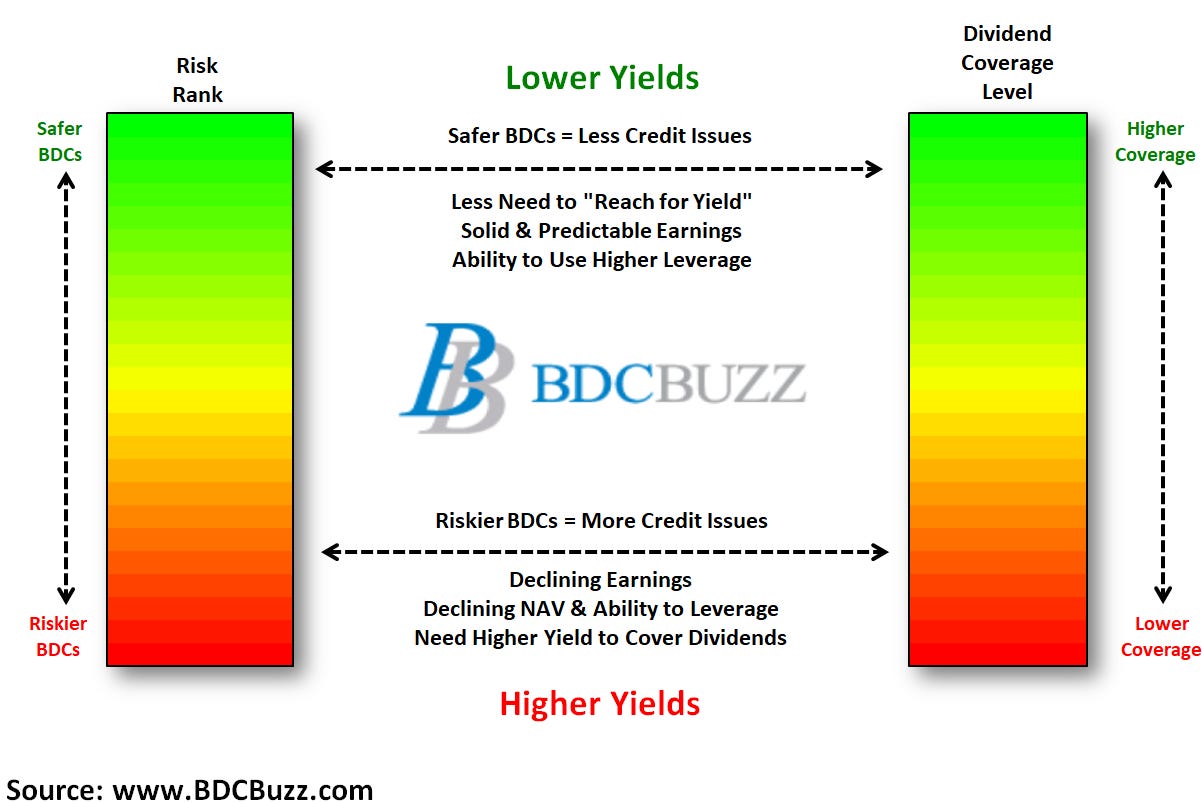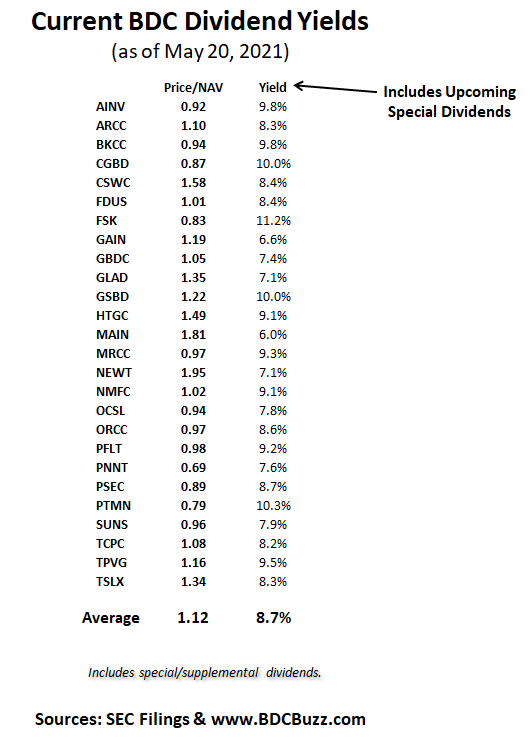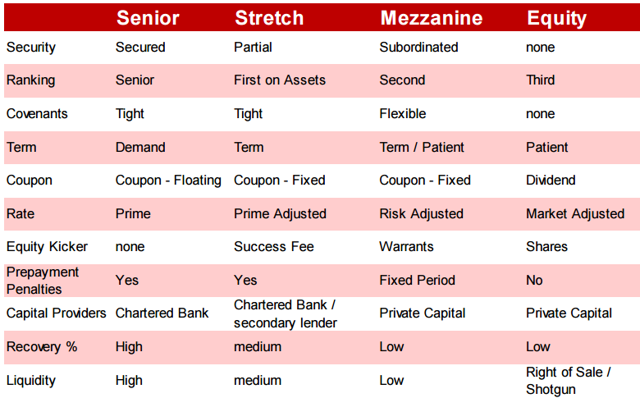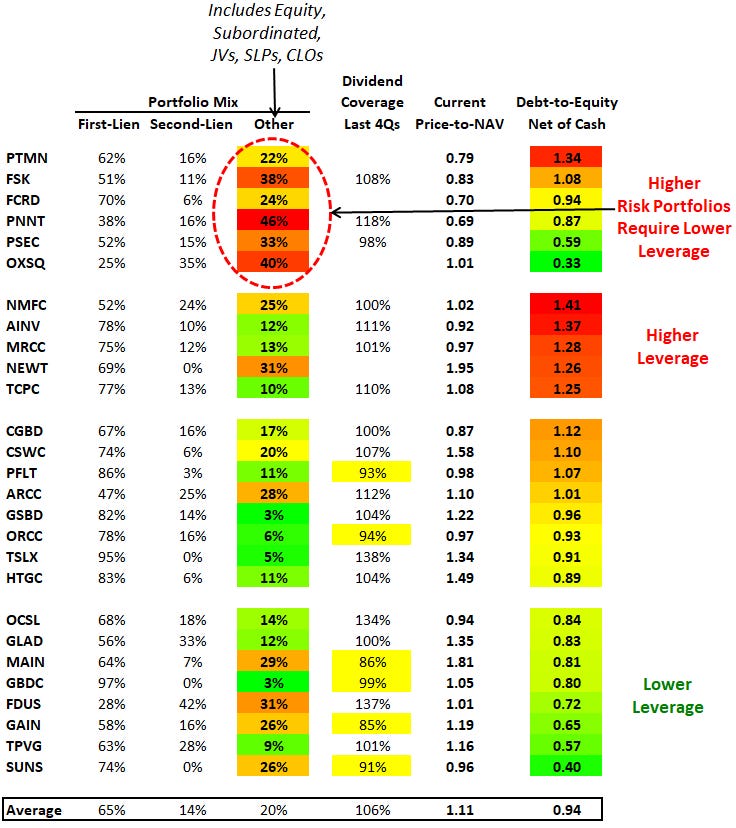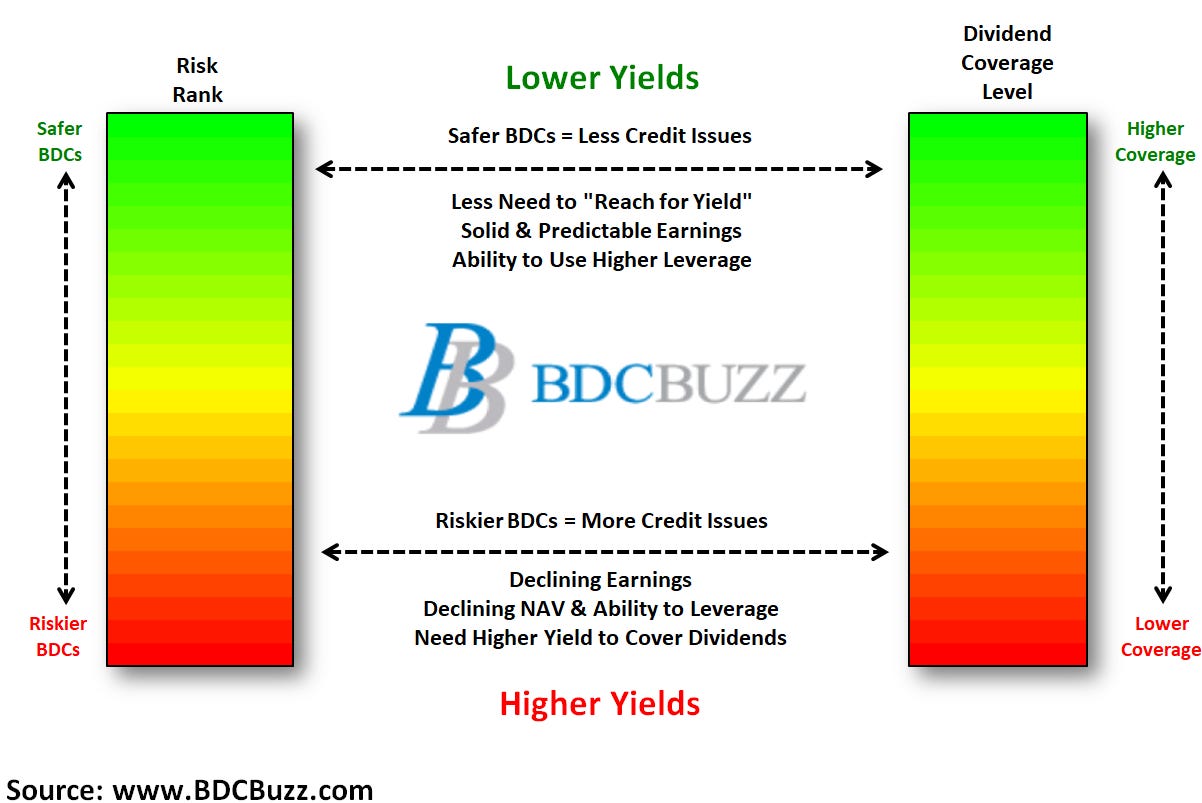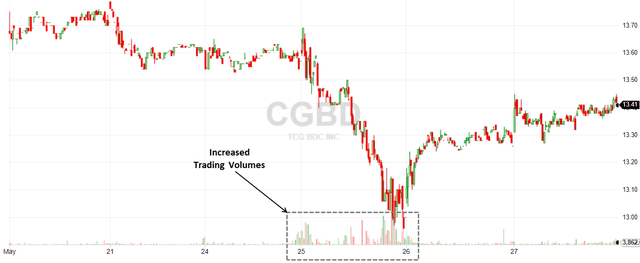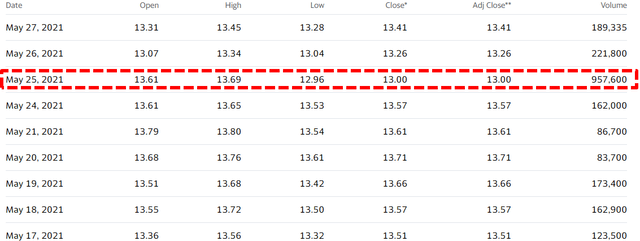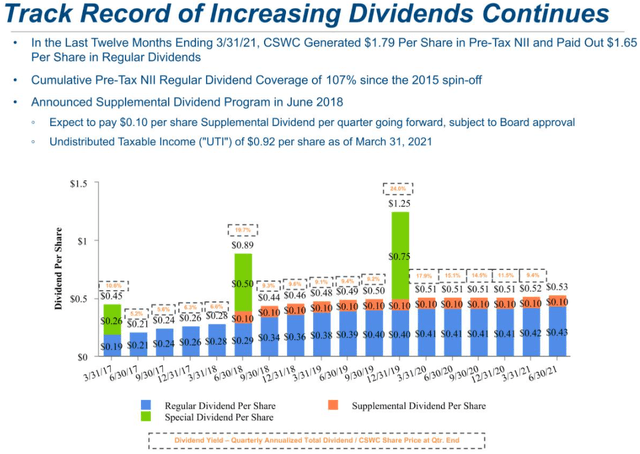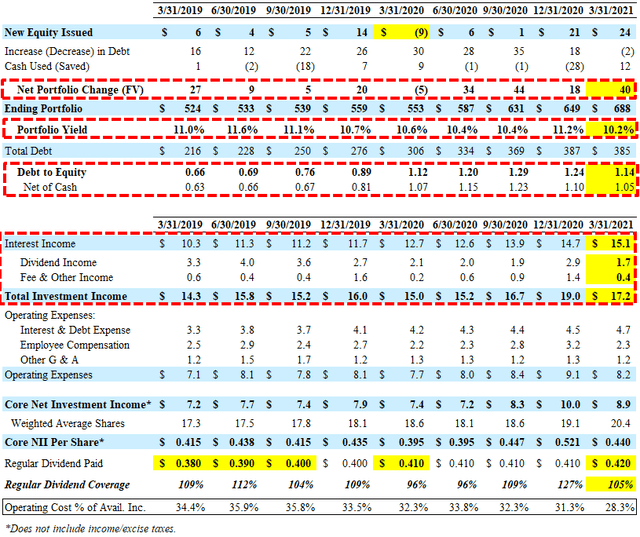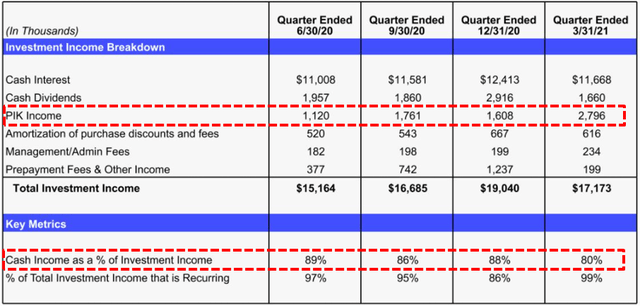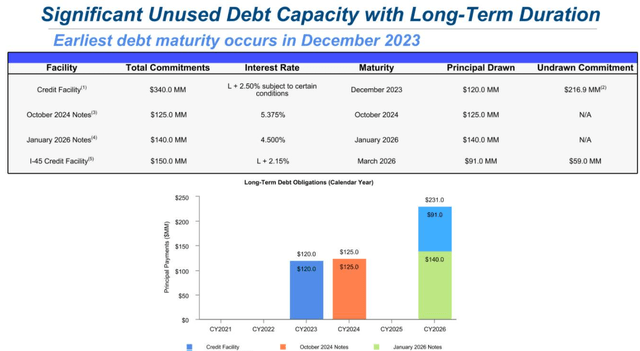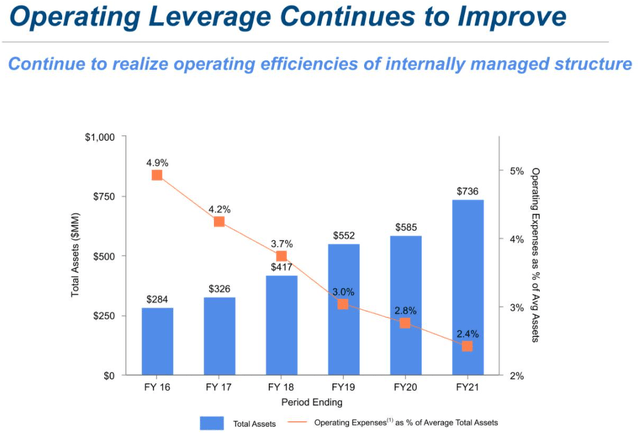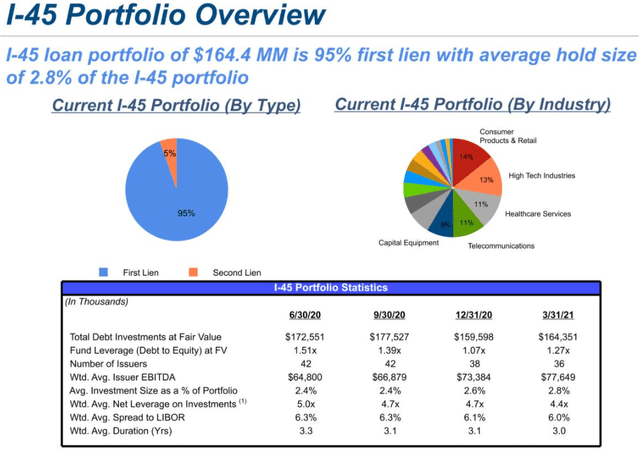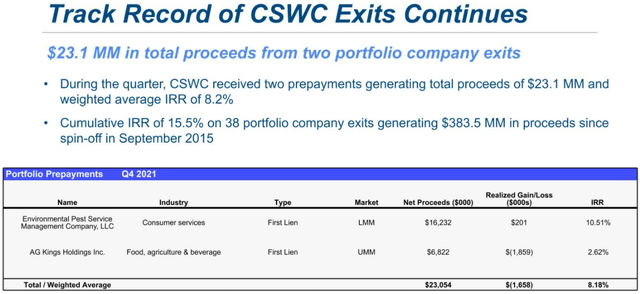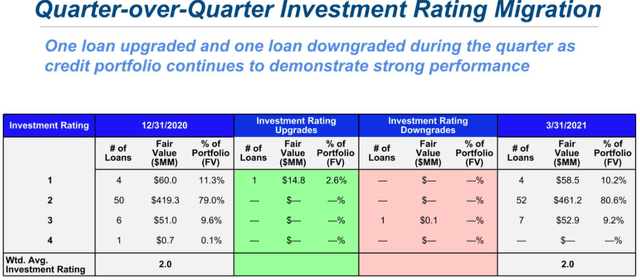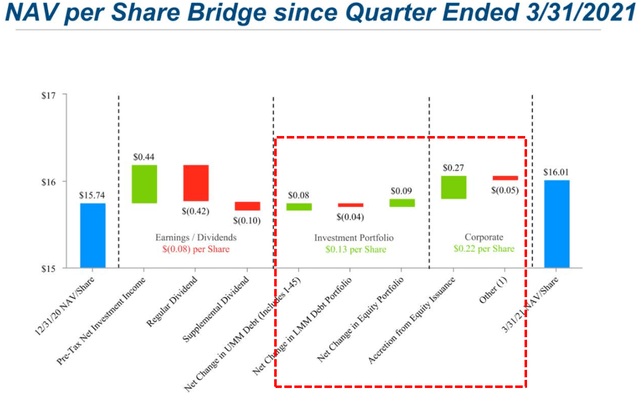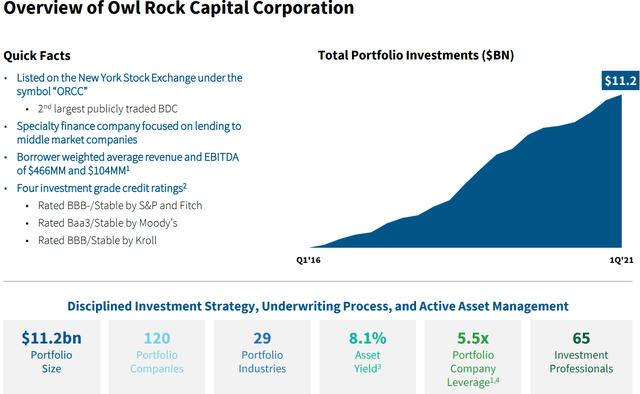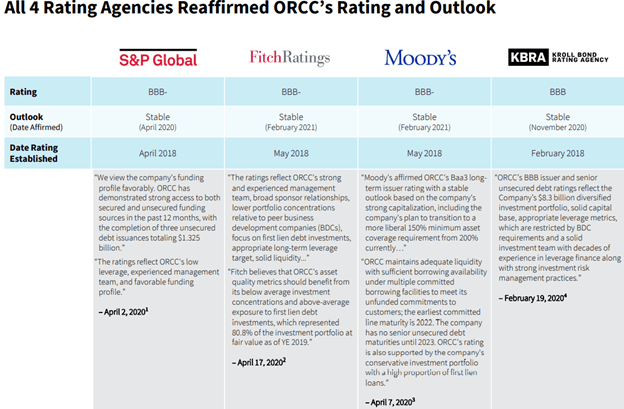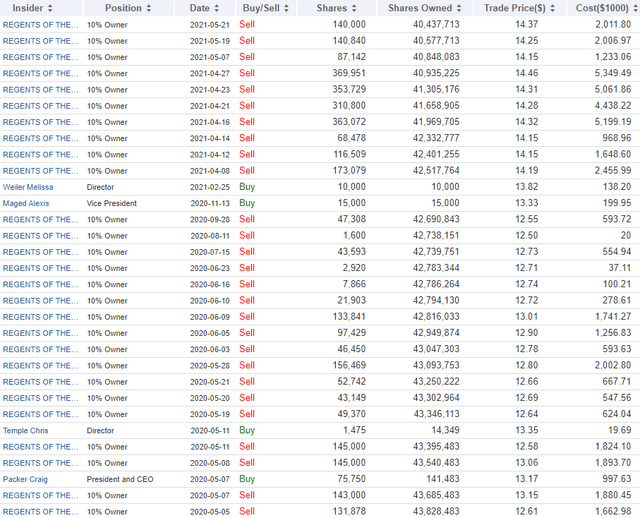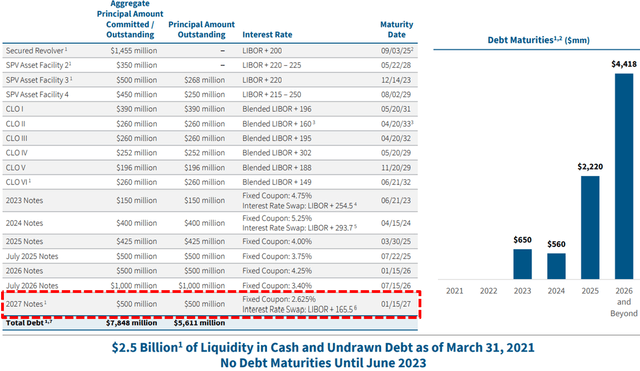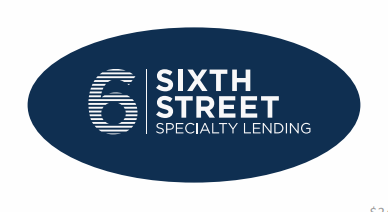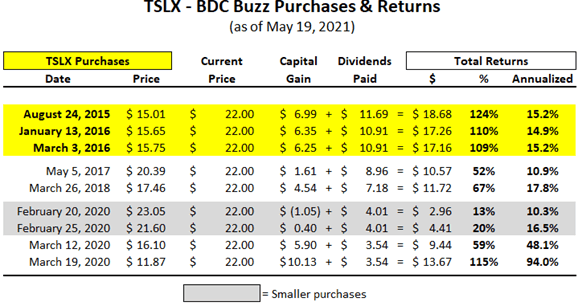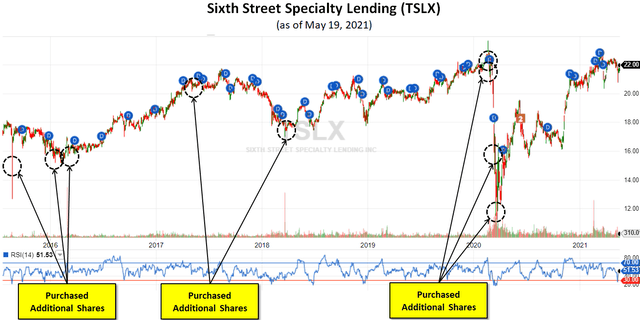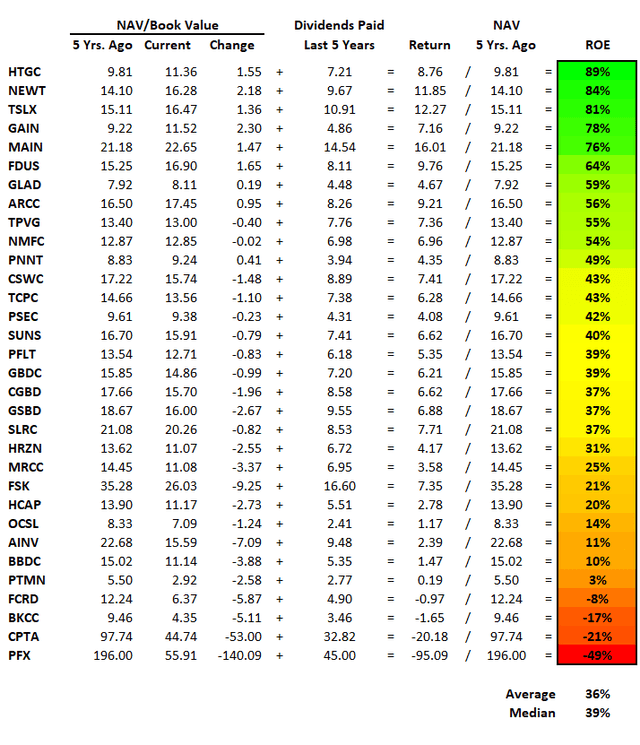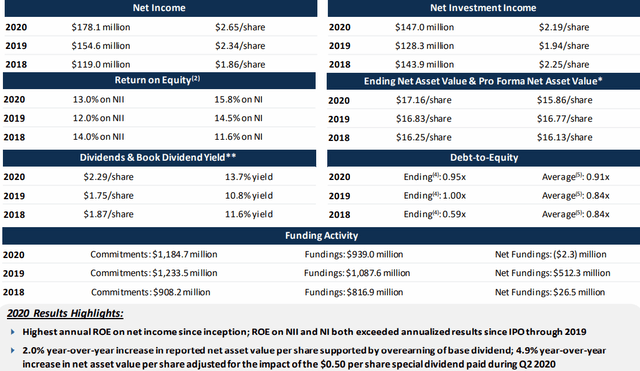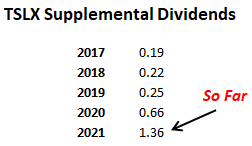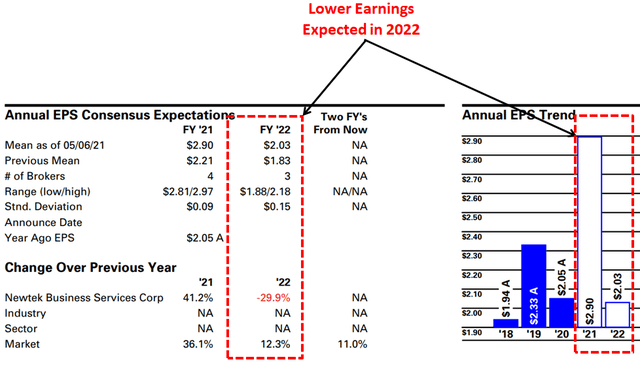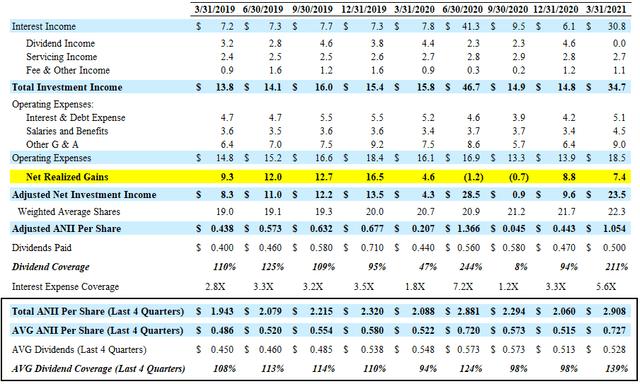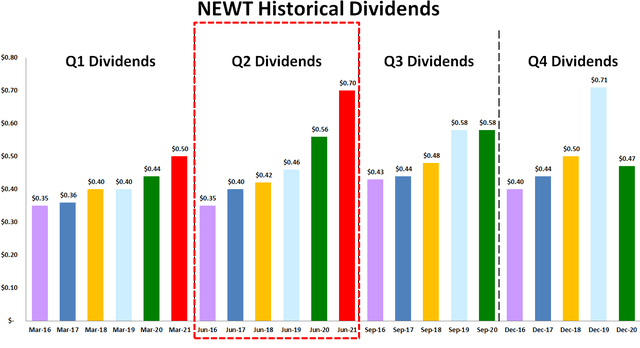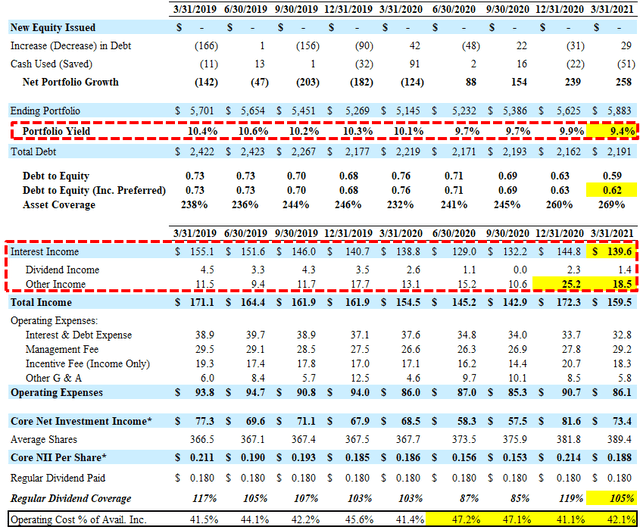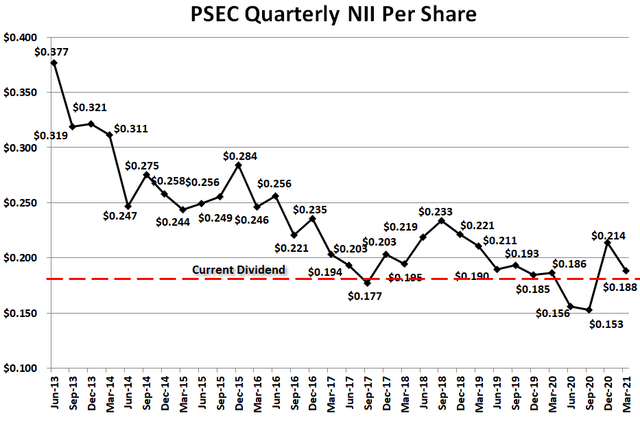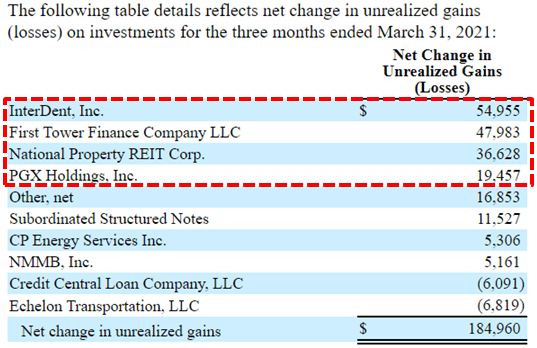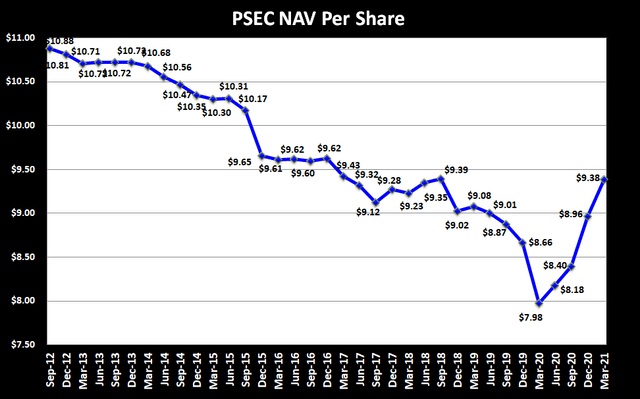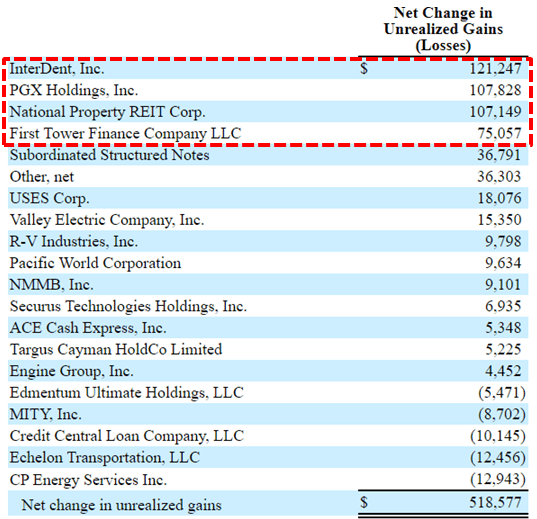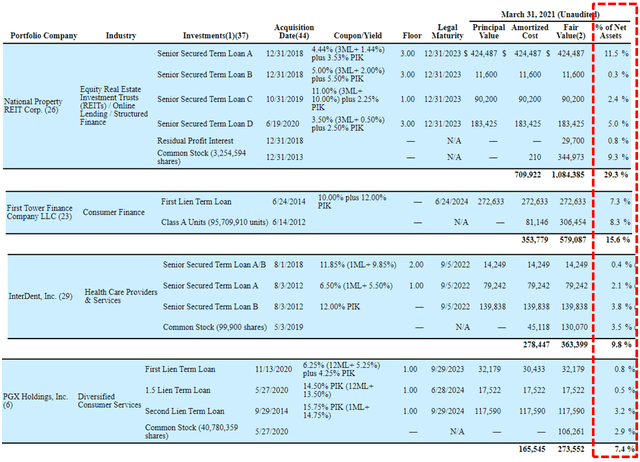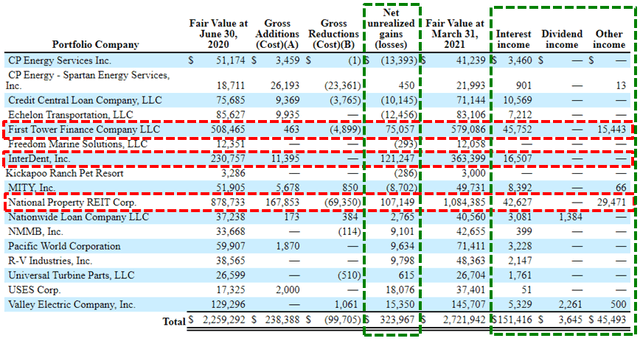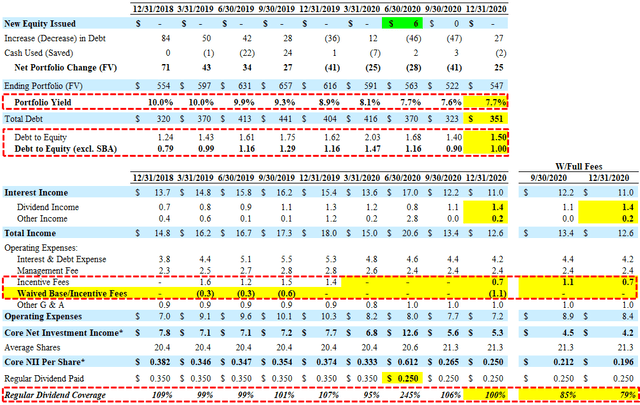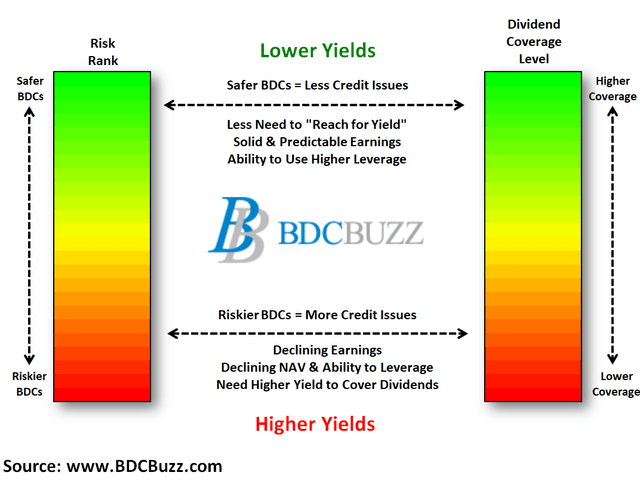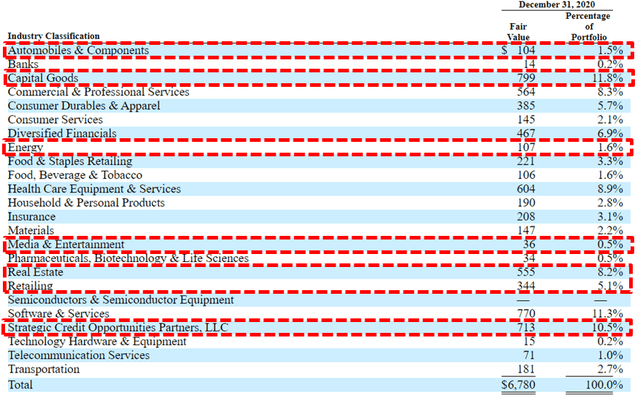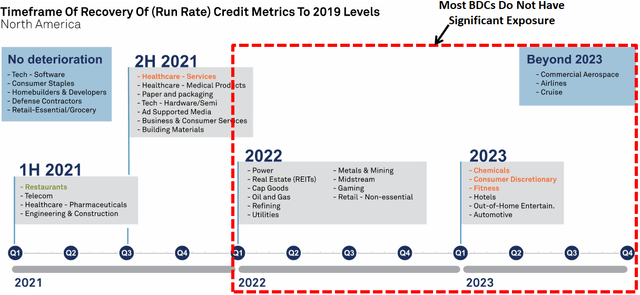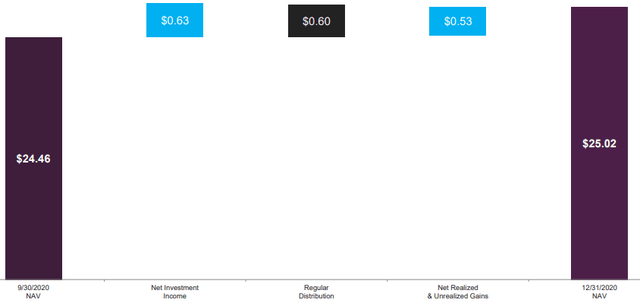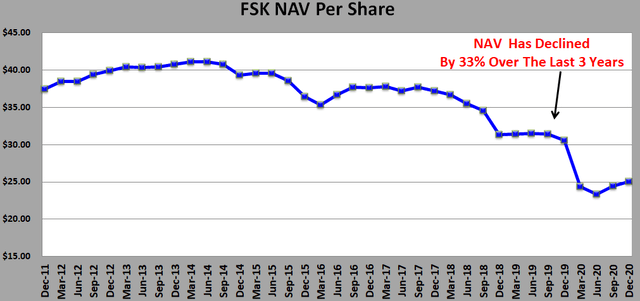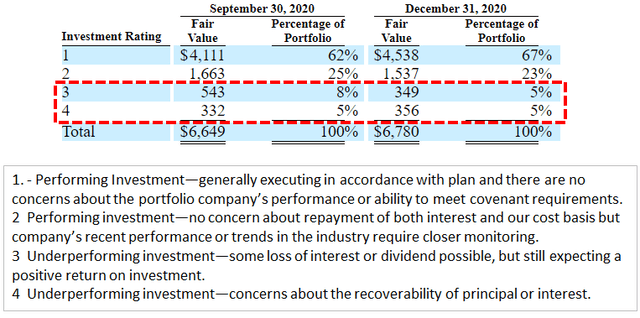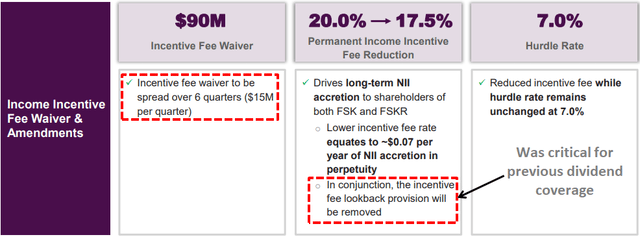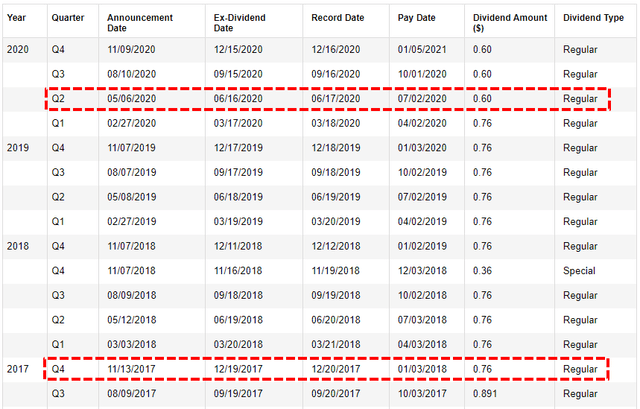The following information was previously provided to subscribers of Premium BDC Reports along with target prices, dividend coverage and risk profile rankings, earnings/dividend projections, quality of management, fee agreements, and my personal positions for all Business Development Companies (“BDCs”).
Each quarter I assess BDC risk rankings that takes into account portfolio credit quality and vintage, quality of management, effective leverage ratios, portfolio mix and diversification, rate sensitivity, historical credit, and NAV performance, and the need to reach for yield to sustain dividends.
Typically BDCs with higher portfolio credit quality can use higher amounts of leverage partially offsetting the lower yields (from safer investments). There is a large difference between a BDC with a higher debt-to-equity ratio and mostly first-lien assets as compared to investments that might be subordinated to other debt or use off-balance-sheet leverage for higher returns. Effective leverage takes this into account.
The following table is an oversimplified view of portfolio investments. BDCs use similar terminology but would likely refer to the “Senior” as “first-lien” and the “Stretch” as “second-lien.” However, many contributors on Seeking Alpha lump first and second-lien together and call it senior because the detail is often hard to find for BDCs as there are very few standardized reporting requirements. It is also important to note that many of the higher-risk BDCs will originate with lower protective covenants and/or security in exchange for higher yields, so not all first-lien is the same. “Mezzanine” is typically referred to as “subordinated debt”. BDCs with higher amounts of first-lien loans and/or lower debt-to-equity ratios have much lower effective leverage.
BDC Leverage Versus Portfolio Mix & Dividend Coverage Update
The following table shows each BDC ranked by its simple (not effective) debt-to-equity ratio net of cash (non-restricted) along with its portfolio mix. The “Other” column includes everything that is not first or second-lien secured debt. A few items to note:
- AINV and CSWC have not reported March 31, 2021, results and will be updated later this month.
- PTMN, FSK, FCRD, PSEC, and OXSQ have higher risk portfolios that require lower leverage and I have separated from the others. These companies are discussed below.
- PNNT previously sold a large amount of first-lien loans to the PSLF as well as markups of some of its equity investments which had a meaningful impact on its portfolio mix. Also, there have been meaningful markups in its equity positions that can fluctuate in value.
- ARCC and ORCC invest in larger middle market companies that would likely outperform in an extended recession environment. A good portion of ARCC’s ‘Other’ investments is its SDLP.
- MAIN, CSWC, GAIN, and FDUS prefer to have a lower portion of their portfolio invested in equity positions of their portfolio companies providing them with realized gains and dividend income to support supplemental dividends.
- NMFC also has higher ‘Other’ investments that include the SLPs and Net Lease program.
- SUNS has the lowest leverage and the ‘Other’ investments are mostly its equity positions in SLR Business Credit and SLR Healthcare ABL.
- TPVG likely has the lowest effective leverage due to 91% secured debt combined with lower leverage.
Many of the BDCs with lower leverage also have lower dividend coverage over the last four quarters including SUNS, GAIN, GBDC, MAIN, ORCC, and PFLT. Dividend coverage should improve over the coming quarter especially ORCC that has been actively growing the portfolio each quarter as discussed earlier this month in “ORCC Quick Update: Q1 2021”. It also should be noted that almost every BDC has decreased leverage (not ORCC) over the last few quarters partially due to NAV increases but also due to conservative management carefully selecting new investments as the economy recovers. PNNT had the largest decrease in leverage from a debt-to-equity (net of cash) of 1.71 to the current 0.87.
I am expecting improved dividend coverage for most BDCs as leverage increases as well as higher amounts of first-lien positions (to support higher leverage). So far this year there have been 9 BDCs that have increased dividends and/or announced supplemental dividends.
I do not cover most of the higher-risk BDCs for many reasons but mostly because these are not typically buy-and-hold investments. PTMN, FSK, FCRD, PSEC, and OXSQ have higher risk portfolios due to higher amounts of non-secured debt, joint ventures, senior loan programs, CLOs, and/or equity positions that all carry much higher external leverage. Typically these assets do not qualify for lower cost BDC credit lines and revolvers which is why many of these BDCs have higher cost unsecured notes as well as using less leverage to maintain credit ratings.
PSEC is an excellent example and management often mentions their “conservative leverage” but this is likely due to the quality of assets. PSEC has huge concentration risks with its top four investments accounting for 39% of the portfolio or over 62% of NAV per share as they have been marked up well over cost likely using aggressive valuation methods. If one or two of these investments had serious issues it would have a large impact on its debt-to-equity ratio. Also, 13% of its portfolio is invested in CLOs that typically have around 10 times leverage on top of their equity positions.
Full BDC Reports
This information was previously made available to subscribers of Premium BDC Reports. BDCs trade within a wide range of multiples driving higher and lower yields mostly related to portfolio credit quality and dividend coverage potential (not necessarily historical coverage). This means investors need to do their due diligence before buying.

